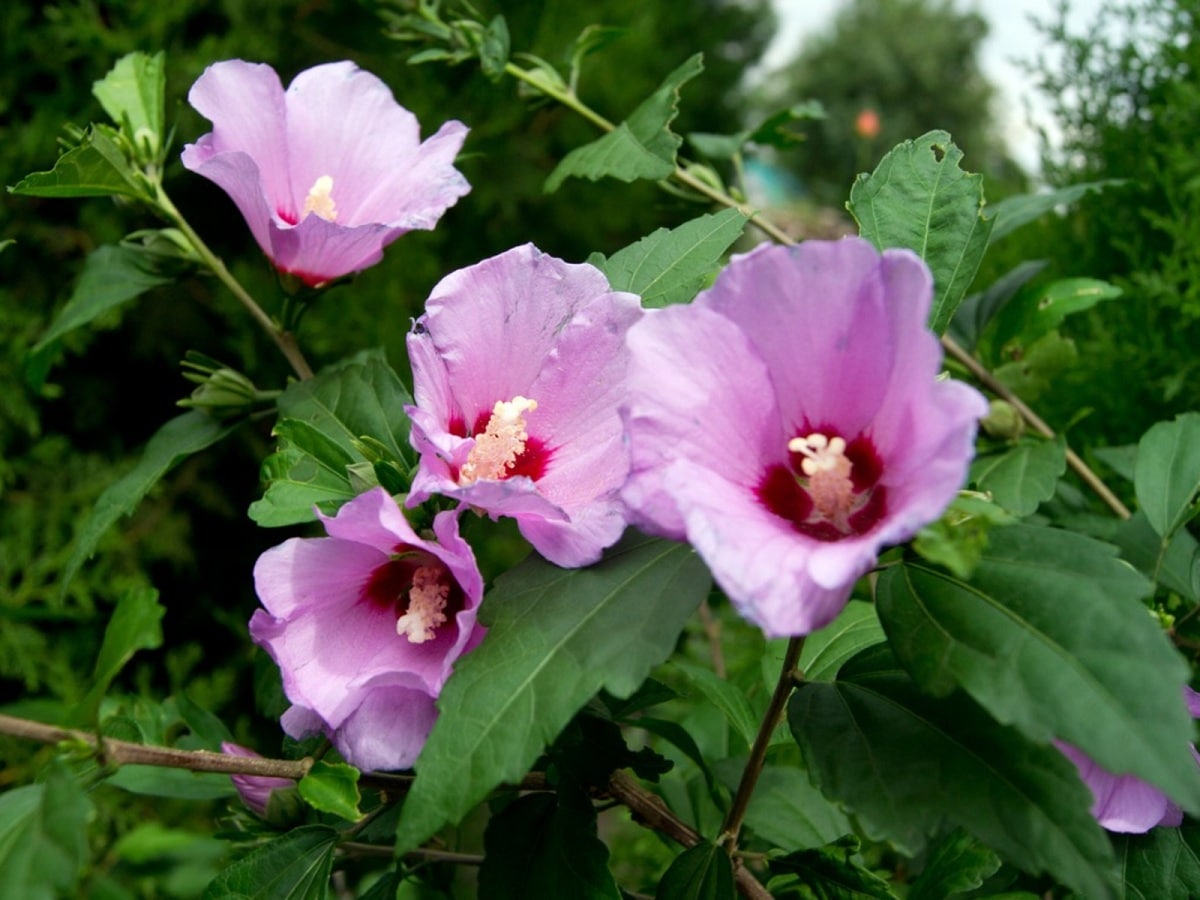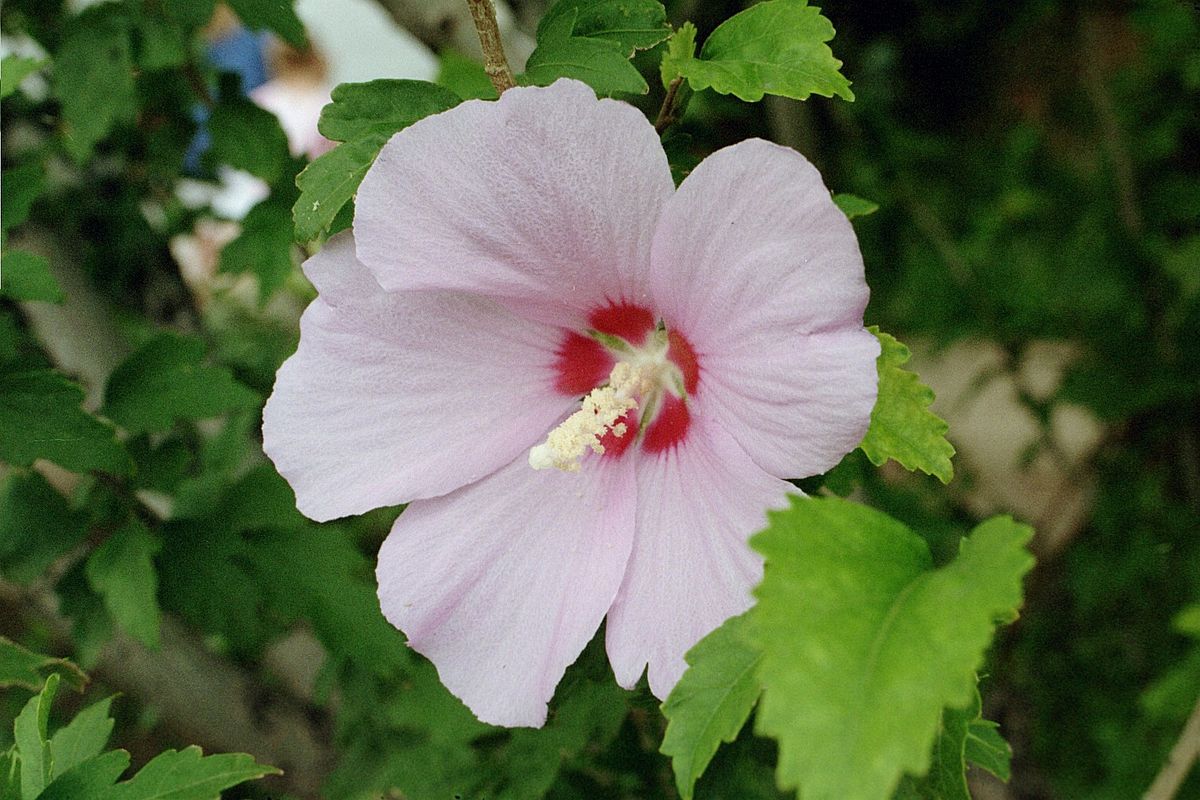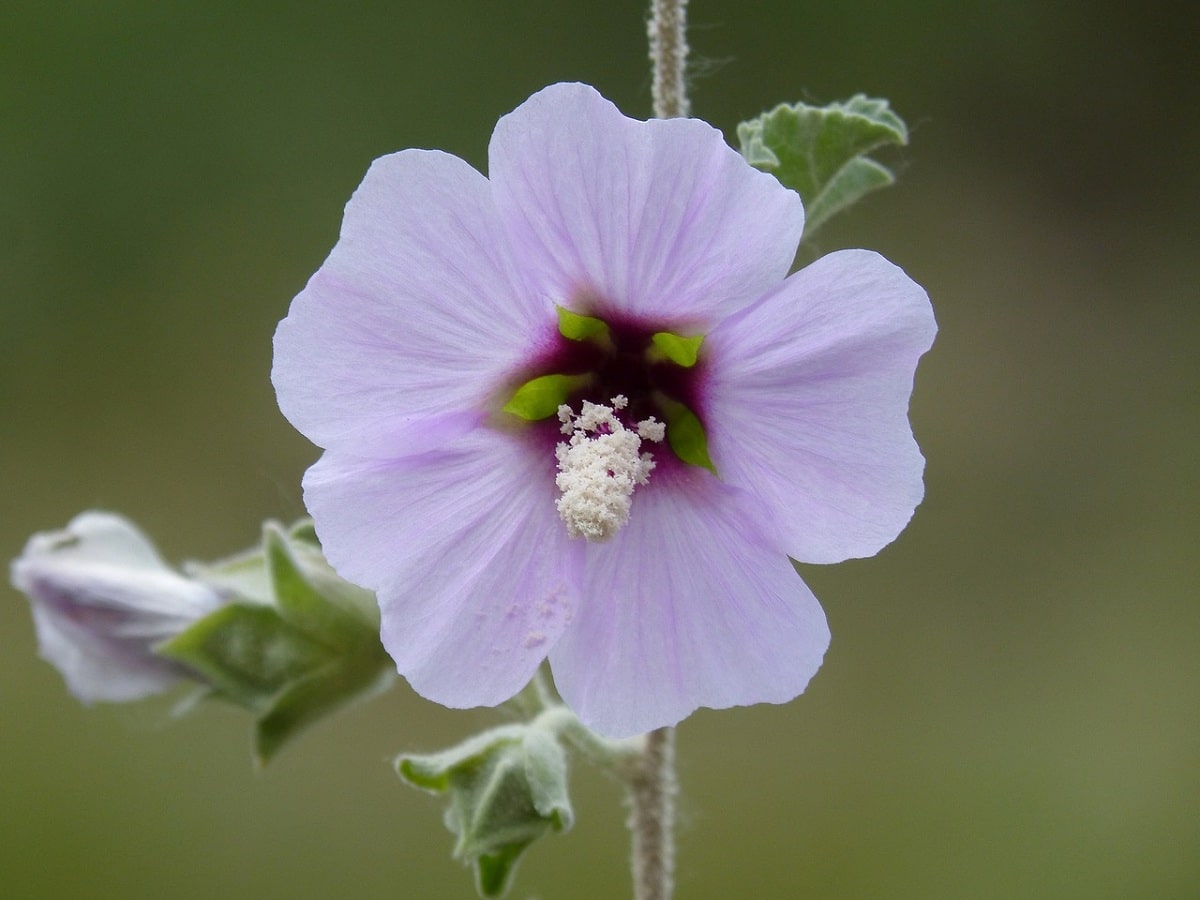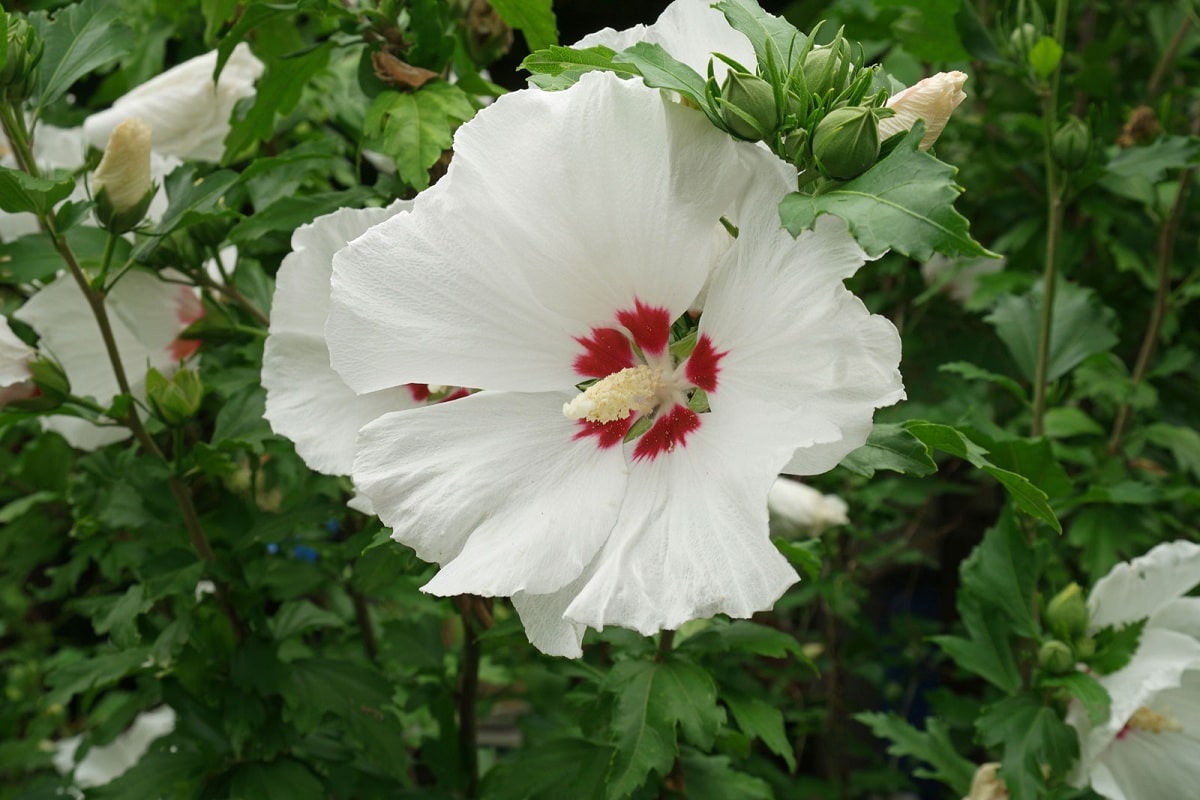
The hibiscus is a plant that belongs to the Hibiscus genus and the Malvaceae family. Within this family we find more than 150 species of shrubs, herbaceous plants and trees that are distributed throughout the tropical and temperate regions of our entire planet. The Syrian hibiscus has somewhat different care than conventional. The syrian hibiscus care They must be taken into account if we want it to fulfill its ornamental function in green public spaces and gardens.
For this reason, we are going to dedicate this article to telling you about the care of the Syrian hibiscus and its characteristics.
Key features

It is a plant that receives the common names of Altea and Rosa de Siria. It is a species from China and India. They are open and highly branched deciduous shrubs that reach 4 meters in height.. The leaves are trilobed, rhomboid-ovoid and intense green. The attractive flowers measure up to 10 cm in diameter, can be single or double and of various colors. They bloom in summer and fall. It is native to China where it was introduced in 1596. It is relatively easy to care for it since it has a great capacity to adapt to the environment.
The fruit is a capsule that has a yellowish brown color and is covered with yellow hairs. It is usually a deciduous species that withstands the cold well and also has tolerance to the salinity of the most coastal areas. If your garden where you are going to plant the Syriac hibiscus is in a coastal area you won't have a problem with it.
On the other hand, the flowering is quite spectacular. It is usually renewed constantly between the months of July to October. The ephemeral flowers have a color of about 6-8 centimeters in diameter and appear successively. These flowers can be single or double point its colors are quite colorful and the tones are on. Generally they tend to move between shades of blue, white, violet, pink, nuanced or with striations. On some occasions it has a stronger heart which is what accentuates its decorative power.
Syriac Hibiscus Care

Given its origin, it requires a warm climate between 14 and 18 degrees in winter. It should be placed away from cold and frost, in a well-lit area with some sun during the first hours of the day. In summer, during the flowering season, you have to water it well and try to keep the soil moist at all times.
It is important to avoid well-drained puddles. Little water is needed in winter. If grown indoors, the foliage should be sprayed regularly to create a moist environment. Add a slow-release granular fertilizer to the compost in the spring and fertilize the hibiscus every two weeks when it is blooming.
For truly spectacular blooms, prune plants in spring. Prune last year's shoots first to maintain an attractive bushy shape. Remove dead, damaged, or tangled branches that could destroy each other. Finally, also trim some old stems to prevent them from getting too full.
The plant is especially sensitive to aphids, mealybugs and red mites, but care must also be taken with whiteflies and sawleaf bees.
If your leaves are turning yellow, may be due to excess water or lack of nutrients. This is resolved by reducing irrigation and applying fertilizer every fifteen days. On the other hand, if the plant drops buds or buds before opening, it may be due to cold conditions or too much drought.
Syriac hibiscus properties

According to popular opinion, Hibiscus is very moisturizing because it is rich in mucilage. Strange things were produced, branches and shoot fibers were produced, which were then used to make paper, the sap from the petals was used to make the black dye used in shoes.
Have you tried hibiscus granite? It is the perfect sorbet when summer temperatures rise. However, to warm up the body, it is recommended to prepare a botanical infusion, submerge a teaspoon of dried flowers in boiling water, and you will see how it benefits the transport of the digestive system and reduces acidity.
Hibiscus has more healing properties, such as preventing flu, colds or respiratory illnesses when you inhale the vapors of this plant.
possible diseases
Healthy leaves are the best symptom of the health of garden hibiscus and potted plants, but they also warn us of the presence of diseases and pests. Let's see what are the main diseases that can attack the Syriac hibiscus:
- If the outbreaks have pustules. Hibiscus is oxidized and requires you to spray it with copper.
- When the leaves have white and brown spots. Indicates the presence of fungi. Gently remove and burn all affected leaves, then apply a fungicide.
- If you notice that the roots have rotted. This is caused by excessive moisture. Let the soil dry out and water at intervals.
- If the leaves have black spots and botrytis. The plant has botrytis. You have to wash the leaves very carefully and then apply a fungicide to the leaves.
- When the leaves acquire a yellow tint. This can happen when there is too much watering or when the plant is iron deficient. Apply specific fertilizers.
Plantation
Once we know what the care of the Syrian hibiscus is and what are the possible diseases that can attack it, we proceed to its plantation. For this plantation we need a place in full sun that is protected from strong winds. This is usually in good garden soil that is nutrient balanced, fertile and well drained.
Once the hibiscus has been planted it does not pose any kind of problem. You just have to make sure that the plant is not continually exposed to late spring frosts or cold winds. These are the things that can cause developing flower buds They wither and fall prematurely. Tolerates limestone well.
I hope that with this information you can learn more about the care of the Syrian hibiscus and its main characteristics.